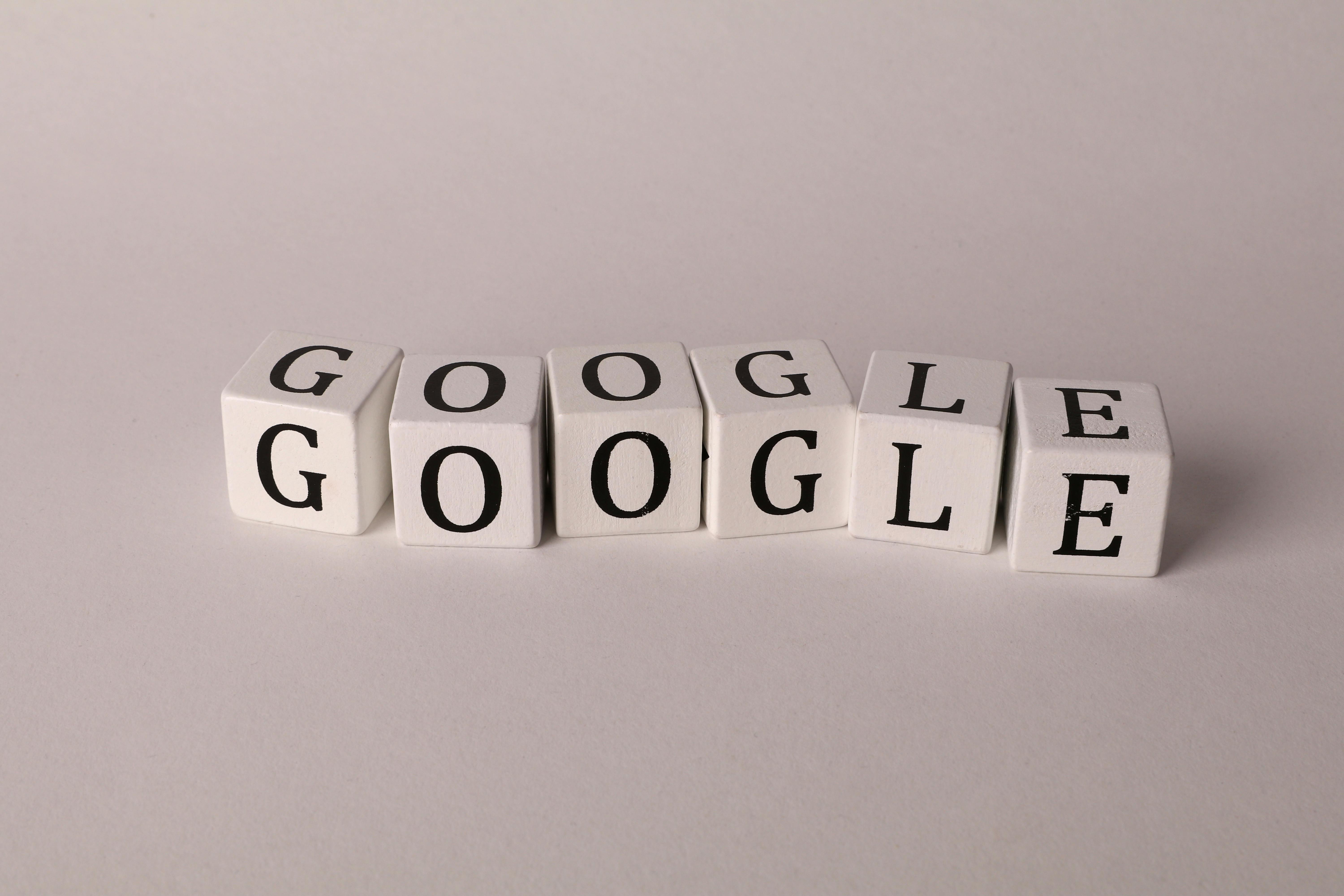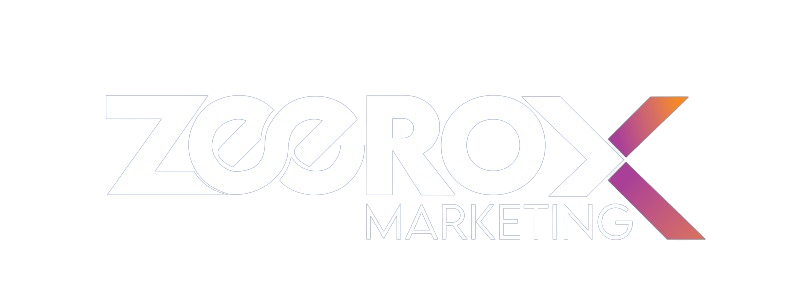
Google Ads
Google Ads
Google Ads is a pay-per-click (PPC) advertising platform where advertisers pay per click (or impression) on an ad.
Google AdWords is an effective way to drive qualified traffic or goodfit customers into your business, because they are looking for products and services similar to yours. You can increase website traffic, get more inquiries and boost store visits through Google AdWords.
You’ll also be able to analyze and optimize these ads to reach more people over time, thanks to Google Ads.
Why advertise on Google?
The most popular search engine is Google, which receives millions of searches per day. Besides, Google Ads has been around for almost two decades and gives it a certain amount of seniority when it comes to paying advertisements.
According to Insider Intelligence, Facebook is expected to generate 58.5% of the global advertising revenue of Meta, amounting to $121.90 billion.
Your competitors are using Google Ads (and might even be bidding on your branded terms). Google AdWords are used by hundreds of thousands of companies to market their products, which means that if you’re ranking organically for a search term, your results will be displayed in the same place as competitors.
Does Google Ads work?
Yeah, Google’s AdWords is working. With an optimized ad campaign and lead flow, you can create a highROI marketing campaign.
Google Ads Terms to Know
- Ad Extensions
You can add additional information to your ad at no extra cost with the Ad Extensions. These extensions are classified into five categories: Sitelink, Call, Location, offer or app.
- AdRank
Your ad placements are determined by your AdRank. The higher your value, the better your ranking, the more eyeballs you’re going to get, and the more likely you’re going to get a user to click on your ad. Your AdRank is calculated by multiplying your maximum bid with a quality score.
- Bidding
Google AdWords is based on a bidding system where, as an advertiser, you choose the maximum bid amount that you are prepared to accept for clicking your advertisement. The more you bid, the better your position will be. You’ve got three options for tenders: CPC, CPM or CPE.
- CPC, or cost-per-click, is the amount you pay for each click on your ad.
- CPM, or cost per mile, is the amount you pay for one thousand ad impressions when your ad is shown to a thousand people.
- CPE, or cost per engagement, is the amount you pay when someone takes a predetermined action with your ad.
- Campaign Type
You will select between seven types of ads: search, display, video, shopping, app, smart, or performance max, before starting a paid ad campaign on Google Ads.
- Search ads appear on Google’s search results page in text format. In the Google Display Network,
- Dissplay ads are typically based on images and are displayed on web pages.
- Video ads are shown on YouTube in a period of 6 to 15 seconds.
- Shopping campaigns appear on search results and the Google shopping tab..
- App campaigns use information from your app to optimize ads across websites.
- Smart campaigns have Google finding the best targeting to get you the most bang for your buck.
- Performance Max is a new type of advertising that allows advertisers to see all Google ad inventory in one campaign.
- Click-Through Rate (CTR)
The number of clicks on your ad, as a percentage of the impressions it gets, is called CTR. A higher CTR indicates a high quality ad that matches the search intent, and which is targeted to relevant keywords.
- Conversion Rate (CVR)
CVR measures form submissions as a proportion of total visits to your landing page. To put it simply, a high CVR means that your landing page offers an exceptional user experience which matches the ad’s promises.
- Display Network
Within Google’s Display Network, ads can be shown on both search results and the Web site. GDN is a network of websites that enable Google Ads space on their web pages, which may be text or image based and are displayed alongside content relevant to your target keywords. Google Shopping and App Campaigns are the most frequently used display advertising options.
- Impressions
Every time your ad appears in the SERP, it’s received an impression. Some advertisers and marketing agents use this informally as “eyeballs” in their ad.
One half of the CTR equation we’ve been talking about is made up by impressions.
You can use this insight from impressions to understand how many people who see your ad click through to your landing page and optimize your ad to get a higher CTR.
Don’t forget, in order to achieve a 100% CTR you can barely get all impressions clicked. People may click off the SERP (zero-click search), click on a competitor’s ad, or even click on an organic search result instead of clicking your ad.
- Keywords
Google will return a series of results that match the user’s intention when you type an query in your search box. The words or phrases that correspond to what the user is looking for and will meet his query are called keywords. For each query you want to display your advertisement in conjunction with, select a keyword. For example, advertisers who target keywords such as ‘gum on shoes’ and ‘clean shoes’ will see results for the searcher who types ‘how to clean gum off shoes.’
Negative keywords are a list of keywords you do not want to rank for. You’ll be kicked out of Google’s bidding for these keywords. In general, they’re related to the search terms you’re looking for, but they’re not in the realm of what you offer or want to rank for.
- PPC
Pay per click, or PPC, is a type of advertising where the advertiser pays per click on the advertisement. The most common type of paid advertising is PPC, which is not unique to Google Ads. Before you launch your first Google AdWords campaign, it’s worth understanding the ins and outs of PPC.
- Quality Score (QS)
Your Quality Score measures the quality of your ad by your click-through rate (CTR), the relevance of your keywords, the quality of your landing page, and your past performance on the SERPs. The QS factor is the determinant of your ad ranking.
How does Google Ads work?
The Google Ads process is made up of three players: a search engine, an advertiser and the Google ads platform. Each of them plays an important role in making Google Ads work, so that advertisers and businesses can make money while consumers are able to see the products and services they’re looking for.
Here’s a breakdown of what happens behind the scenes with Google Ads:
- Advertisers bid on keywords in Google ads.
Bidding on keywords is how advertisers let Google know which keywords they want their ads to appear on the SERPs. The bid on a keyword may be as little as several dollars to hundreds of dollars. Advertisers typically set a daily budget which is used to fund individual keyword auctions.
Furthermore, you can tailor your advertisements to suit your budget no matter what size of the business or available resources. You can stay within the monthly limit, pause or stop ad spending at any time using Google Ads.
- Potential customers search for a keyword on Google.
In addition, prospective customers are looking for a keyword that an advertiser has placed on the market. On the SERP, they’ll see ads for products or services that closely align with the intent of their query. The order in which the ads are seen has a significant influence on their ranking.
- Google shows ads for that keyword based on ad rank.
Google works fast at the background to carry out a process known as ad ranking between when users enter their search in Google’s search bar and when they appear on SERP for this keyword.
In seconds, Google will rank advertisers at the top of the SERP based on the total number of ad spaces available. They use keyword quality score and the amount the advertisers have bid on the keyword to determine who gets the number one spot, number two, three, and so on.
- The potential customer clicks through to one of the websites listed on the SERP.
Once the customers have seen an ad for a keyword they’ve been searching, they will be able to choose whether or not it best fits their query.
They can decide to buy or return to the SERP and select another ad or organic SERP result to click on from there. With no click or purchase, they can also choose to stop searching.
Factors That Influence Google Ads
Many factors impact your ability to create effective and high-performing Google Ads. Let’s cover them below.
- AdRank
Your ad placement is determined by AdRank. This is determined by a formula which takes into account the quality score as well as the price you’re bidding for your keyword.
The quality score is based on your ad’s content and relevance, which Google measures by the number of clicks you get when it appears i.e.your CTR. Your CTR is determined by how well your ads match the searcher’s intent, which can be inferred from three factors:
- How relevant your keywords are.
- Whether your ad copy and CTA meet the searcher’s intent.
- The user experience of your landing page.
If you want to start a Google AdWords campaign, your quality score is where most attention should be concentrated before increasing the bid amount. The higher your QS, the less you’ll have to spend on acquiring it and the better position you can get for free.
- Location
You will select the geographical area where your ad is displayed when you first set up a Google advertisement. If you’ve got a store, it should be within an acceptable distance of your location.
Your location must be set in the place where you are shipping if you have an eCommerce store and a physical product. The sky’s the limit if you offer a service or product that can be accessed anywhere in the world.
- Keywords
For paid advertising, keyword research is just as important as organic search. The searcher’s intent has to be matched as much as possible by your keyword. This is because, based on your selected keywords, Google matches your ad with search queries.
Each ad group you’ve created in your campaign will target a small set of keywords, one to five that are most appropriate and Google is going to display ads on the basis of those selections.
Headline and Description
The difference between a click on your ad and a click on your competitor’s ad can be your ad copy. To do so, your ad copy must correspond to the searcher’s intent, align with its target keywords and provide a simple solution for the pain point of that person.
Ad Extensions
You should use Ad Extensions for two reasons if you run Google Ads. They are free and give users another reason to interact with your advertisement. These extensions are grouped in one of the following five categories:
Sitelink extensions Expand your ad to help you stand out, and provide additional links to your website that are more enticing for users to click on.
Call extensions enable you to include your phone number in your advertisement, providing users with an additional and immediate way to contact you. Please enter your phone number if you have a customer service team ready to serve and convert the audience.
Location extensions include your location and phone number within your ad so Google can offer searchers a map to find you easily. This option is great for businesses with a storefront, and it works well for the search query “… near me.”
Offer extensions Work if you have a current promotion in place. If users see that your options are cheaper than those of competitors, they may be tempted to click on your ad over another.
App extensions Provide a link to download the application from your mobile device. This will reduce the friction of searching for and downloading an app from the App Store with a new search.
Google Ads Retargeting
Remarketing is a way of advertising to users that have previously been interacting with you on the internet but haven’t converted, in Google AdWords. You can track users on the Internet and target them with ads by using tracking cookies. Remarketing is efficient because the majority of prospects must see your advertisement several times before becoming a client.
How to Use Google Ads
Is it clear to you that you should start using Google AdWords? Good. It’s easy to start, but it requires a few steps. Here’s a step by step guide to setting up your first Google AdWords campaign.
- Use a Google Ads planning template.
- Set up your Google Ads account.
- Choose your business name and website.
- Select your advertising goal.
- Craft your ad.
- Add keyword themes.
- Set your ad location.
- Set your budget.
- Confirm payment.
- Link your Google Analytics account.
- Add UTM codes.
- Set up conversion tracking.
- Integrate your Google Ads with your CRM.
Types of Google Ads Campaigns
- Search Ad Campaigns
Search ads appear on the Google search results page in text form. As an example, a search for “pocket squares” returns sponsored results:The benefit of search ads is that you’re displaying your ad in the place where most searchers look for information first — on Google. And Google is showing your ads in the same format as all its results except for denoting them as an Advertising Ad”), so that users are used to being able to see and click on their results.
Responsive Search Ads
Responsive search ads allow you to enter multiple versions of headlines and ad copy (15 and four variations, respectively) for Google to select the best performers to display to users. With traditional ads, you create one static version of your ad, using the same headline and description each timeResponsive ads allow for a dynamic ad that is auto-tested until you arrive at the best version for your target audience — for Google, that means until you get the most clicks.
- Display Ad Campaigns
Google’s network of sites in different sectors, as well as an array of audiences which have opted to display Google Ads, also known as the Google Display Network. The owner of the website benefits from being paid per click or impression of the advertisement. Advertisers will benefit from the exposure of their content in front of audiences who have a similar set of characteristics.
- Video Ad Campaigns
Don’t forget, YouTube is also a search engine. So, if you use the right keywords, you’re going to be in front of the video, disrupting the user’s behavior just enough to get their attention.
- App Ad Campaigns
Google App Campaigns promote your mobile application by advertising on Google Search Network, YouTube, Google Play, Google Display Network, and moreYou can run ads to encourage your audience to install your app or, if they already use it, to perform certain actions in your app.
You do not create an ad campaign for apps, unlike other types of ads. Instead, provide Google with the information and audience of your application and submit a bid. Google’s doing the rest, so that your app gets in front of a right eye:
- Shopping Ad Campaigns
Google Shopping Ad Campaigns are another type of Google Ad. On SERPs, shopping campaigns, including detailed product information, such as price and image, are displayed, as are other types of advertising. To create shopping ads, you can use Google’s Merchant Center to input specific product information that Google is pulling from it.
Shopping ads enable you to promote particular products and product lines, rather than market your brand in a general way. That is why you will see ads for a variety of brands, on the upper and lower sides respectively, when you are trying to find some product in Google. When I look for running shoes, that’s what I see.” Google search ads are at the top of the page, but the specific products advertised on the side are shopping ads optimized for keyword running shoes.
Google Ads Bidding Strategies
It’s time to start bidding as soon as you’ve set up your advertising campaigns and have a tracking system in place. Remember, how you bid is what determines whether or not you’re able to get into Google Ads. While the amount of bids will be determined by your budget and goals, there are a few strategies and bidding settings that you need to know about when beginning an advertising campaign.
- Automated vs. Manual Bidding
You have two options when it comes to bidding on your keywords — automated and manual. Here’s how they work:
- Automated Bidding Google will take over the driving seat and allow platforms to adjust your bid on a competitive basis. The maximum budget can still be determined, and Google will work within the limits of these constraints in order to give you the best chance at winning a bid.
- Manual Bidding Allows you to set bids for ad groups and keywords, which may allow you to reduce the amount of money spent on ads that do not perform well.
- Bidding on Branded Search Terms
‘Branded terms, such as ‘Z CRM’, are those with your company’s or unique product’s name.’ There’s a lot of debate about whether or not you can bid on your brand terms. On one side of the debate, it can be seen as a waste of money to bid on terms that are likely to lead to organic results.
On the contrary, when you bid on these terms, you’ll have domain control over those search results pages and help convert prospects that are further away from your target. If I want to research chat tools and highly consider Zeeroxmarketing, it will be easy to find the right result simply by searching Zeeroxmarketing software at any given time with no effort of scrolling.
The second argument in favour of bidding on your branded terms is that if you don’t, competitors are free to bid for them and take up valuable real estate which should be yours.
- Cost Per Acquisition (CPA)
If you’re uncomfortable with the idea of spending money to convert prospects into leads, you can set a CPA instead and only pay when a user is converted into a customer. You can take comfort in knowing that you’re only paying when you acquire a paying customer, while this bidding strategy may cost you more. The strategy allows you to track and justify your advertising expenditure easily.
Google Ads Best Practices
Don’t give up if you tried to advertise in Google and didn’t succeed. There’s a lot of reasons why your Google ads aren’t working. Let’s take a look at some of the most common Google Ads best practices first.
- Use a PPC planning template.
- Avoid broad keyword terms
- Don’t run irrelevant ads
- Optimize your ad landing page
- Improve your Quality Score (QS).
Google Ads Tips
Now that you know how to use and set up a Google AdWords campaign, here are a few short tips and best practices to help you create successful campaigns, which we have covered extensively in this article, but their importance cannot be underestimated. You can refer to this as a checklist over and over again.
- Have a clear goal
- Create a relevant landing page
- Use the right keywords
- Automate the process
- Use Ad Extensions
- Use negative keywords
- Measure and improve upon your strategy
Work with an agency that has an Google Adds marketing list a mile long
If you’re ready to work with an Google Adds agency that offers all the Google Adds marketing strategies mentioned on this page (and then some), Zeeroxmarketing is here for you.
We’re a full-service digital marketing agency that will work with you to create a custom Google Adds marketing campaign that can transform your business with some of the best Google eeAdds marketing services out there.
If you’re looking for a marketing agency in Rawalpindi, there are several top-tier options to consider. is well-regarded for its digital marketing and software development services
Services Links
.
Recent Posts
.
Looking for a WordPress
Professional?
We offer WordPress consulting and advanced development services that includes custom theme and plugins programming.
Contact us to get your WordPress Website or Blog Today!
Custom PHP Programing
At Zeerox Marketing, we specialize in providing innovative marketing and production solutions.
Our team of experts excels in custom PHP programming, ensuring that your digital projects are not only functional but also visually appealing and user-friendly.
Whether you’re looking to revamp your website, develop a new web application, or integrate complex APIs, Zeerox Marketing has the expertise to bring your vision to life.




